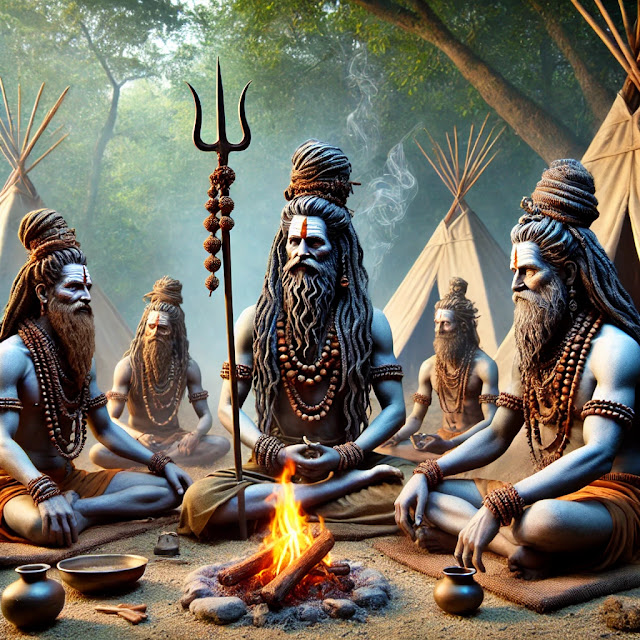 |
| Who Are Naga Sadhus? |
Who Are Naga Sadhus?
Naga Sadhus are ascetic monks in Hinduism who renounce worldly life and dedicate themselves to spiritual practices, self-discipline, and devotion. They are followers of the Shaivite tradition (worshippers of Lord Shiva) or Vaishnavite tradition (worshippers of Lord Vishnu) and are primarily associated with the Akhara system of Hindu monastic orders.
Qualities and Characteristics of Naga Sadhus
-
Renunciation
- They renounce all material possessions and worldly ties, including their family, wealth, and social status.
-
Minimalistic Lifestyle
- They live without clothes (hence the term "Naga," meaning "naked") to symbolize detachment from the material world.
-
Spiritual Devotion
- Dedicated to rigorous meditation, yoga, and worship, they aim to attain moksha (liberation).
-
Physical and Mental Discipline
- Known for their extreme endurance, they live in harsh conditions, often meditating in caves or forests.
-
Defenders of Dharma
- Historically, Naga Sadhus also served as protectors of temples and dharma, sometimes taking up arms.
-
Unique Appearance
- They smear their bodies with ash (symbolizing detachment and purity), grow long matted hair (jatas), and carry spiritual symbols like tridents (trishul), rudraksha beads, and kamandalu (water pot).
Qualifications to Become a Naga Sadhu
-
Initiation (Diksha)
- Only those willing to completely renounce their worldly life can be initiated into the Naga Sadhu tradition.
-
Austerity and Commitment
- The aspirant must live under the guidance of a guru and practice strict celibacy and detachment.
-
Training in Spirituality
- They undergo years of spiritual training, including yoga, meditation, and scriptural studies.
-
Ashram Life
- Must live and serve in an ashram, demonstrating dedication to a spiritual lifestyle.
-
Final Ceremony
- The initiation culminates in a ritual called "Pind Daan," where they symbolically perform their own last rites, signifying the end of their worldly life.
Struggles of Naga Sadhus
-
Harsh Living Conditions
- They endure extreme weather, hunger, and solitude during their penance in remote areas.
-
Physical Challenges
- Performing intense austerities like meditating in snow-clad mountains or scorching deserts tests their endurance.
-
Social Misunderstanding
- Their unconventional lifestyle often leads to misunderstandings and stereotypes among the general public.
-
Internal Discipline
- Maintaining strict discipline, celibacy, and detachment requires immense mental and spiritual strength.
Nature of Naga Sadhus
- Detachment: They are entirely detached from materialistic desires.
- Spiritual: Their lives revolve around spirituality and self-realization.
- Fearless: They show no fear of death, pain, or societal judgment.
- Guardian-like: Though ascetic, they can be fierce when it comes to protecting dharma.
Public Perception of Naga Sadhus
-
Positive Views
- Many people respect them as spiritual seekers and consider them guardians of Hindu traditions.
- They are seen as an embodiment of detachment and selflessness.
-
Misunderstandings
- Some view their practices as bizarre or extreme.
- The nakedness and ash-smeared appearance sometimes lead to misconceptions.
-
Religious Significance
- During events like the Kumbh Mela, their presence is seen as sacred and auspicious, attracting millions of devotees.
Modern-Day Role
Naga Sadhus continue to inspire spiritual seekers and uphold ancient traditions. Despite their struggles, they remain a symbol of extreme dedication, self-discipline, and devotion in Hindu spirituality.









Follow Us